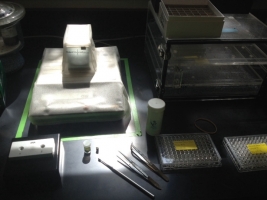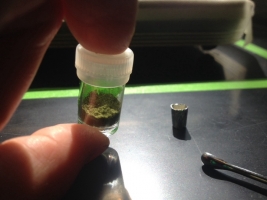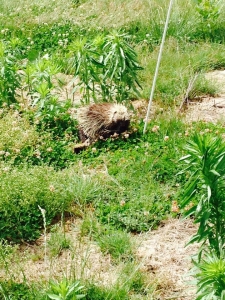You are here
Balancing Conservation and Agriculture at the Farm
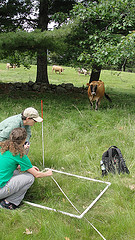
This summer, my project is a bit different than most of the other students’ here. While the general idea of conservation is about saving the forest, my project involves protecting open areas, like pastures – or, in this case, an old golf course of the Petersham Country Club.
The thing is, most of Massachusetts has been reforested over the last century or so and with it, the decline of species that are only present around forest edges or open areas. Additionally, there is the ever present need for pastures for agriculture. So the idea for my project centers on if we can conserve these open ecosystems while providing land for cows to graze. And this is what has brought me to the “Harvard Farm.”
Remnants of the old golf course remain - like the old putting greens, some paved pathways, and the occasional golf ball. Last year was the first census of all the plants on the farm. Plants were cataloged and 27 10x10m plots were set up throughout the farm. Some of these are in the grassy areas, some are in the former greens, and the rest are in shrubby areas all of which have very different plants.
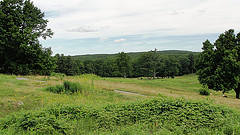
The farm is also divided into three areas of “grazing intensity”—one area is strictly for hay and free of cows, another area is for cows to graze freely, and the third is a high intensity area where cows are rotated within the area. These areas are divided by electric fences which I have by accident and by curiosity confirmed proper functioning.
So what I do in the farm is look at the plant species in the plots and some subplots and collect some of them to look at additional traits like leaf surface area, dry mass, and do some chemical analyses.
The lab work involves cutting leaves off grass and arranging them on a scanner just right so none of them overlap. Dry processing involves making a bunch of plants into plant powder and then putting a little bit of that powder in a little tin ball where it will then be burned to determine carbon and nitrogen ratio.
Through the month and a half of being here, I’ve not only learned how to arrange and grind up blades of grass –- as useful as that may be, but I’ve also learned upwards of about 75 plant species. And having taken no official botany classes, I was pretty surprised with myself. A side effect of that may be dreaming about plant identities but, other than that, I have really enjoyed my project. Going out to the country club is quite enjoyable, and if I did not have surveys or collections to take, it would be a nice spot for a game of Frisbee or a picnic, aside from the areas with grazing cows, who tend to be quite the curious bunch.
Aside from cows I have seen quite the variety of wildlife on the farm including deer, snakes, turkeys, and porcupines. I’ve also enjoyed how the landscape has changed over the short time of me being here. So many plants have started flowering, and the raspberry bushes make for an enjoyable snack when surveying otherwise prickly, unenjoyable plots.
Recently, the majority of data collection is complete so now the data analysis will begin. This project is only setting the baseline for the long term survey of the farm, so I won’t know for sure the answers to all my questions by the end of the summer. However, I have learned a ton and this project and am excited to see what I can find in the rest of my time at Harvard Forest.

